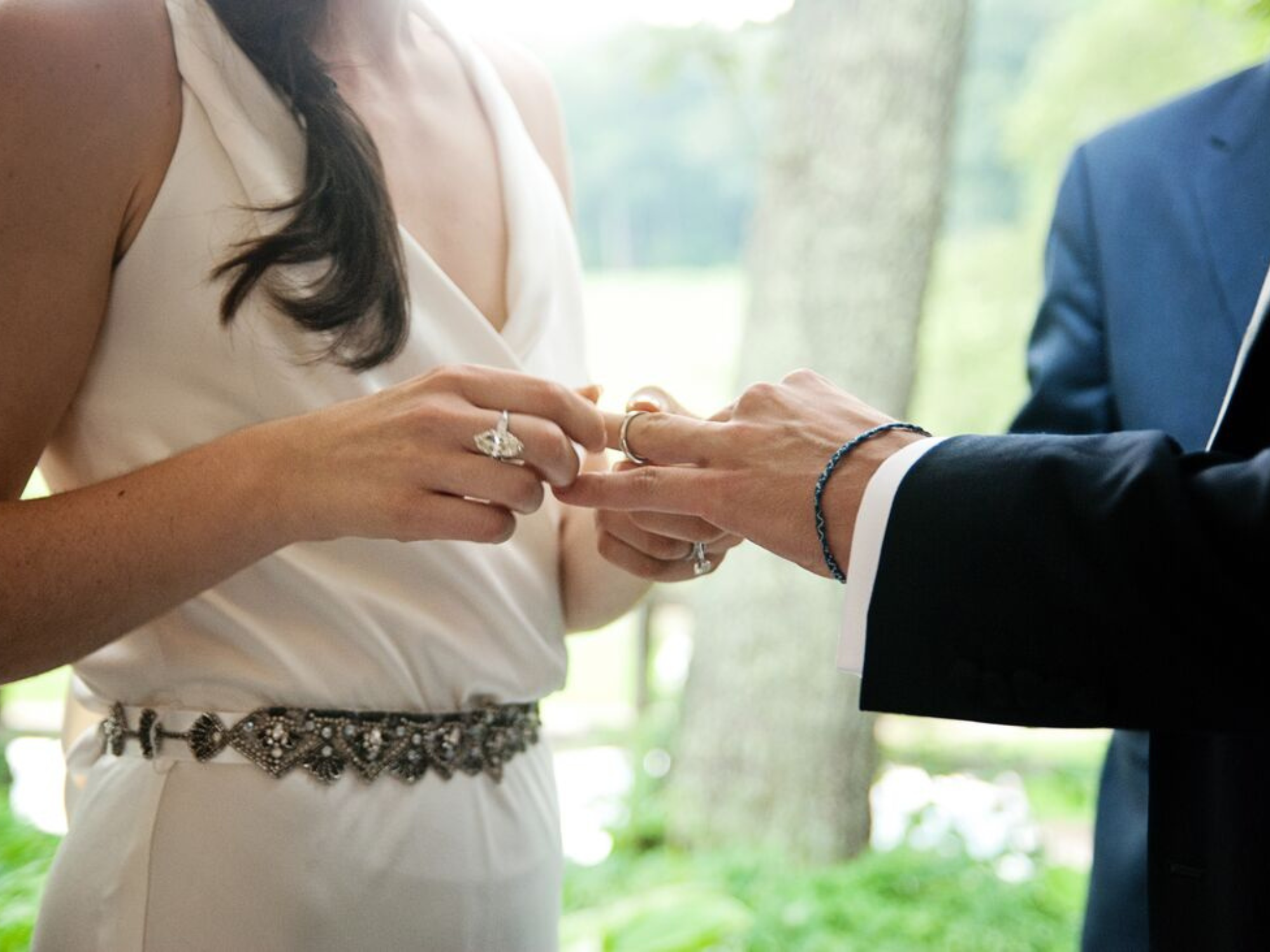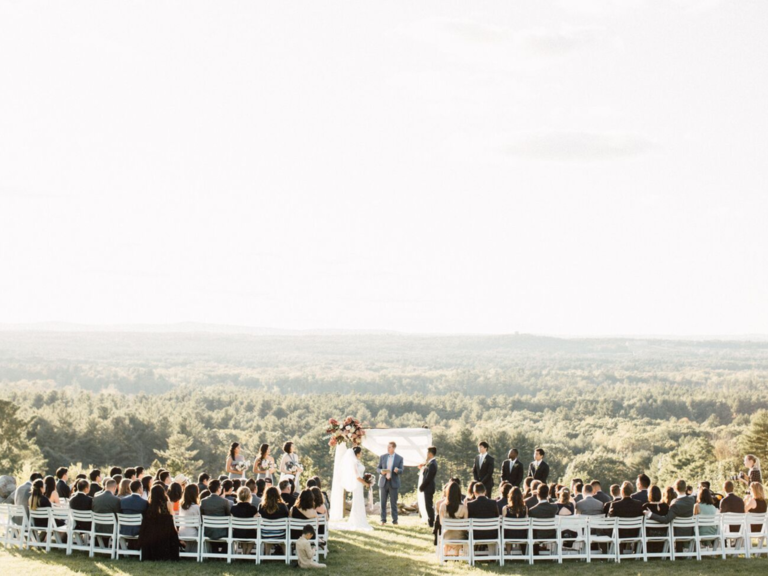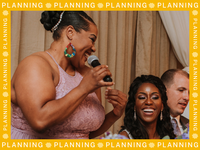A Planner's Guide to Wedding Ceremony Seating
No matter the size, location, venue or theme of your wedding, chances are, it includes a wedding ceremony—i.e. the part where you actually say "I do." While the excitement and enthusiasm surrounding wedding planning tends to circle around the reception, the ceremony deserves equal, if not even more, attention. This is especially true when it comes to some of the most basic elements, like ceremony seating.
In this article:
- Do You Have a Seating Plan for a Wedding Ceremony?
- Who Gets Reserved Seating At a Wedding Ceremony?
- Wedding Ceremony Seating Order
- How to Find Wedding Ceremony Seating
- Wedding Ceremony Seating Planning Tips
- Wedding Reserved Seating Frequently Asked Questions
Do You Have a Seating Plan for a Wedding Ceremony?
It is a good idea to plan for wedding ceremony seating. Unfortunately, many couples opt to "wing it" by placing out enough seating for the number of expected guests and letting folks sit on a first come, first serve basis, which can cause a number of issues. "It is essential to have a well-thought-out plan to ensure a smooth processional and to have your most important guests seated in the front rows," explains Jessica Ralph, owner of Parties A' La Carte. "Not only is taking into consideration any potential obstructed views and accommodating guests with special needs crucial, but having a well-executed seating plan will help ensure that everything runs smoothly as you exchange your vows."
Who Gets Reserved Seating At a Wedding Ceremony?
Traditionally, seating at a wedding ceremony is reserved for parents, siblings, grandparents and god-parents (if applicable), explains Sarah Chianese, owner of Mangia and Enjoy! In the event that your wedding party is not standing up with you at the altar, there is usually reserved seating up front for them as well. "Some couples opt to create reserved seating for every guest, although more often than not, only the first few rows, depending on the size of your respective families, are reserved," says Chianese. "In contrast, the remaining guests take their seats on a general admission, first-come, first-serve basis."
Wedding Ceremony Seating Order
Your ceremony seating order may depend on your respective religion(s). Here's a look at the traditional seating order based on your religion or ethnicity.
Christian
"For traditional, Christian-based ceremonies, it is customary for the bride's side of the guest list to sit to the left, while the groom's guest list sits to the right from the viewpoint of the guest seating area," explains Chianese.
Jewish
Jewish wedding ceremony seating typically involves the reverse of Christian wedding ceremony seating—the bride's guests on the right and the groom's on the left.
Korean
Korean wedding ceremony seating also involves the reverse of Christian wedding ceremony seating—the bride's guests on the right and the groom's on the left.
Indian
For certain Indian ceremonies, such as sangeets or mehndi, Chianese explains that an amphitheater, surround-style set up is usually the go-to. "This allows all guests to see the happy nuptials and is customary," she adds.
That being said, you may opt not to include any of these traditional ceremony seating orders—and that's fine too!
How to Find Wedding Ceremony Seating
If you're getting married at a house of worship or other location with built-in seating, your ceremony seating arrangement is pretty much set. If not, you may need to rent chairs or benches from a rental company, and work with your venue and planner to figure out how to arrange them. If you're searching for a reputable rental company in your area, look no further than The Knot Vendor Marketplace, where you can read reviews, learn more about offerings, and more.
Wedding Ceremony Seating Planning Tips
Here, we asked experts to share some of their best tips for how to plan seating arrangements for a wedding ceremony.
Decide if you want to go the traditional route.
Chianese recommends first discussing with your partner and your planner which cultural or religious elements are essential to the two of you—then, discuss how closely you'd like to stick with traditional or creative methods. "With tradition, there are specific 'rules' or suggestions to consider, while choosing an 'out-of-the-box' route allows you to decide which, if any, traditional elements you'd like to embrace and offers you free-range to come up with alternative arrangements," she says.



Keep guests' comfort top of mind.
No matter the seating arrangements for your ceremony, it's important to consider the comfort levels of your guests, especially those who are elderly, pregnant, have young children or are disabled. "If you know someone in a wheelchair attending, please situate them in an aisle seat, removing the seat(s) from that section and allowing ample room for your guest to witness comfortably," says Chianese. "Elders should also be placed at either end of the aisles to allow them to easily get in and out comfortably."
Seat close family up front.
Not only is it traditional to seat your close family up front at your wedding ceremony, but it's also courteous. Parents, grandparents and siblings should make up the first two rows. "As for your wedding party, depending on the size of your respective party members, they are often placed immediately behind the immediate family members, but some couples opt to have their wedding party remain at the altar with them as they take their vows," says Chianese.
Enlist the help of ushers.
Kelley Nudo, Client Relations & Operations Director at Momental Designs, recommends assigning the task of seating guests to ushers or groomsmen to help ensure that the seats of the ceremony are filled appropriately and that the guests are not seated too close to the back or scattered. "Ushers can also direct those with reserved seats to find their specific place," she adds.
Make sure all guests can see the altar well.
No matter where they're seated, all guests should be able to see what's going on up on the altar. "Take into consideration the potential of the sun shining in eyes for an outdoor ceremony, large floral arrangements that might need to be carefully placed to not impede someone's view or making sure you have enough seating to accommodate all guests," says Nudo. "Sometimes even spacing chairs in different patterns can greatly impact the guests' experience at the ceremony."
Wedding Reserved Seating Frequently Asked Questions
Since wedding ceremony seating can be tricky, you might have some more questions that you need answered. Here are some of the most frequently asked questions regarding wedding reserved seating.
How to Reserve Seats at a Wedding Ceremony
The simplest and most effective way to reserve seats at a wedding ceremony is by leaving cards or signs on the reserved rows and/or seats. You could also opt to section off rows using floral garlands, ribbon or another design aspect that fits with the theme of your wedding, suggests Chianese. "If every seat is assigned, having a wedding party member utilized as an usher to seat each guest as they arrive is helpful," she says. "If you wish to refrain from using your wedding party as ushers, hiring a professional team who can graciously ask each guest their name and bring them to their seats, much like going to an opera or theater performance, is helpful."
When to Seat Guests With Reserved Seating
The reserved seating tends to be for guests who are part of the wedding processional, which is why it may come in handy to leave signs so that guests who are not part of the processional don't take these seats. "Guests who are part of the processional, such as the wedding party or immediate family members, are typically seated during the ceremony itself and have been notified of their specific seat at the rehearsal the night prior," says Ralph. "By following this order, it ensures that all guests are seated and ready for the ceremony to start, while also allowing the processional participants to enter and take their seats at the appropriate time."
Who Seats Those With Reserved Seating
"Ushers or groomsmen can be tasked to seat the guests upon their arrival and should be made aware of those who have reserved seating; however, the parents of the couple (and sometimes grandparents) will likely be part of the processional or enter very shortly before the ceremony begins," says Nugo. "They can either be seated by the ushers or they will be escorted by the groom/groomsmen or will seat themselves in their assigned seat."





















